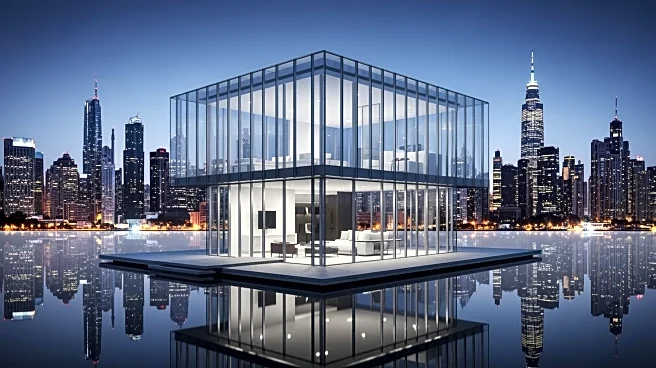What's Happening?
Realtor.com has released its September Luxury Housing Report, detailing the differences in space offered by million-dollar homes across various U.S. cities. Nationally, homes priced between $1 million and
$2 million offer a median of 2,994 square feet. However, this varies significantly by location. Atlanta, Georgia, provides the most space, with homes averaging 4,500 square feet. Denver, Aurora, and Centennial in Colorado also offer substantial space, with a median of 4,272 square feet. In contrast, Urban Honolulu, Hawaii, offers the least space, with homes averaging just 1,651 square feet. Similarly, San Jose, Sunnyvale, and Santa Clara in California offer limited space, averaging 1,688 square feet. The report also notes a decline in the national luxury threshold to $1.24 million, marking a 0.5 percent drop from August and a 2.4 percent decrease year over year.
Why It's Important?
The report underscores the significant variability in the luxury real estate market across the U.S., affecting potential buyers' decisions based on location. Cities like Atlanta and Denver offer more space for the same budget, potentially attracting buyers seeking larger properties. Conversely, coastal cities like Honolulu and San Jose may appeal to those prioritizing location over space. The decline in the national luxury threshold suggests a slight easing in the market, potentially making luxury homes more accessible to a broader range of buyers. This variability can influence real estate investment strategies and impact local economies, as demand shifts based on these factors.
What's Next?
As the luxury real estate market continues to evolve, potential buyers and investors may adjust their strategies based on these findings. Cities offering more space for the money may see increased interest from buyers seeking value, while coastal cities may continue to attract those prioritizing location. The ongoing changes in the luxury threshold could lead to more competitive pricing and increased negotiations in the market. Real estate professionals and developers may need to adapt to these trends to meet changing consumer preferences and demands.
Beyond the Headlines
The report highlights broader economic and social implications, such as the impact of remote work and lifestyle changes on housing preferences. As more individuals prioritize space and location, cities offering larger properties may experience growth in population and infrastructure development. Additionally, the decline in the luxury threshold may reflect broader economic trends, such as shifts in wealth distribution and consumer spending habits.











